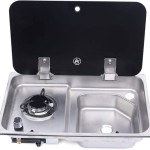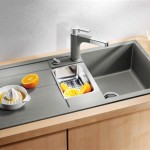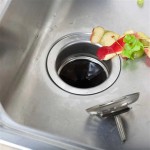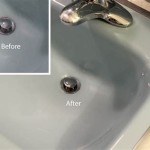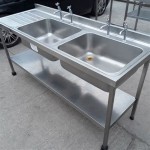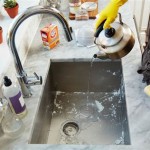Single Sink Vanity 48 Inches: A Comprehensive Guide
The 48-inch single sink vanity represents a popular choice for bathroom renovations and new construction projects. Its size strikes a balance between providing ample countertop space and storage while remaining suitable for a variety of bathroom layouts. This comprehensive guide explores various aspects of the 48-inch single sink vanity, including its dimensions, styles, material options, installation considerations, and maintenance requirements.
Understanding the dimensions of a 48-inch single sink vanity is crucial for proper space planning. While the term "48 inches" refers to the width, other dimensions, such as depth and height, also require careful consideration. Standard depth typically ranges from 18 to 22 inches, providing sufficient space for plumbing and storage. Height usually falls between 30 and 36 inches, although taller or shorter options may be available to accommodate individual preferences and accessibility requirements.
The actual dimensions can vary slightly between manufacturers and specific models. It is essential to consult the product specifications provided by the manufacturer to ensure accurate measurements before making a purchase. Measure the intended installation area carefully, accounting for any existing plumbing fixtures or architectural features that may restrict space.
The style of a 48-inch single sink vanity significantly impacts the overall aesthetic of the bathroom. A wide range of styles exists, allowing homeowners to select a vanity that complements their desired design theme. Popular styles include traditional, modern, transitional, and farmhouse.
Traditional vanities often feature ornate details, such as raised panel doors, decorative moldings, and carved accents. These vanities typically incorporate classic materials like solid wood and granite or marble countertops. Traditional styles often evoke a sense of timeless elegance and sophistication.
Modern vanities, on the other hand, emphasize clean lines, minimalist designs, and contemporary materials. These vanities often incorporate features such as integrated sinks, floating designs, and frameless cabinets. Common materials include engineered wood, glass, and stainless steel. Modern styles often create a sleek and streamlined look.
Transitional vanities blend elements of both traditional and modern styles, creating a versatile and adaptable aesthetic. These vanities often feature simple yet elegant designs, combining traditional materials with modern finishes. Transitional styles offer a balance between classic and contemporary elements.
Farmhouse vanities evoke a rustic and charming feel, often incorporating reclaimed wood, shiplap panels, and vintage-inspired hardware. These vanities typically feature apron-front sinks and open shelving, adding to the farmhouse aesthetic. Farmhouse styles often create a warm and inviting atmosphere.
The selection of materials for a 48-inch single sink vanity directly affects its durability, appearance, and maintenance requirements. Common materials for vanity cabinets include solid wood, plywood, MDF (medium-density fiberboard), and particleboard. Countertop materials include granite, marble, quartz, solid surface, and laminate.
Solid wood is a durable and aesthetically pleasing option for vanity cabinets. It offers natural beauty and can be stained or painted to complement any bathroom decor. However, solid wood can be more susceptible to moisture damage than other materials. Proper sealing and ventilation are crucial to prevent warping or cracking.
Plywood is a cost-effective alternative to solid wood. It offers good strength and stability and is less prone to warping. Plywood vanities are typically finished with a veneer or laminate to enhance their appearance.
MDF is an engineered wood product made from compressed wood fibers. It provides a smooth and uniform surface that is ideal for painting or applying a laminate finish. MDF is more resistant to moisture than solid wood or particleboard but may still require proper sealing.
Particleboard is the least expensive option for vanity cabinets. It is made from compressed wood particles and resin. Particleboard is susceptible to moisture damage and may not be as durable as other materials. It is typically used for budget-friendly vanities.
Granite is a natural stone known for its durability and heat resistance. It offers a unique and luxurious appearance. Granite countertops are relatively easy to maintain but may require periodic sealing to prevent staining.
Marble is another natural stone option that offers a classic and elegant look. Marble is softer than granite and more prone to scratching and staining. It requires more frequent sealing and cleaning than granite.
Quartz is an engineered stone made from quartz crystals and resin. It is highly durable, stain-resistant, and low-maintenance. Quartz countertops offer a consistent appearance and are available in a wide range of colors and patterns.
Solid surface countertops are made from acrylic or polyester resins. They are non-porous, stain-resistant, and easy to repair. Solid surface countertops are available in a variety of colors and patterns and can be custom-fabricated to fit any bathroom layout.
Laminate countertops are made from layers of plastic laminate bonded to a particleboard or MDF core. They are a cost-effective option that offers a wide range of colors and patterns. Laminate countertops are relatively easy to clean but are not as durable as other materials.
Key Point 1: Understanding Size and Space Requirements
Before purchasing a 48-inch single sink vanity, it is crucial to accurately measure the available space in the bathroom. Consider the overall layout of the room and the placement of other fixtures, such as the toilet and shower. Ensure that there is enough clearance for opening doors and drawers and for comfortable movement around the vanity. Also, account for plumbing lines and electrical outlets, which may need to be relocated or modified during installation.
The 48-inch width is a key measurement, but the depth and height are equally important. A vanity that is too deep may encroach on the walking space, while a vanity that is too tall may be uncomfortable to use. Consider the height of the individuals who will be using the vanity and choose a height that is ergonomically appropriate.
In addition to the vanity itself, consider the space required for the sink and faucet. Different sink styles, such as undermount, drop-in, and vessel sinks, have varying dimensions and installation requirements. Similarly, different faucet styles, such as single-hole, centerset, and widespread faucets, require different hole configurations in the countertop.
Key Point 2: Considering Storage Needs and Functionality
A 48-inch single sink vanity offers a significant amount of storage space, but it is important to choose a vanity with a storage configuration that meets your specific needs. Consider the types of items you need to store, such as toiletries, towels, cleaning supplies, and personal care products. Look for vanities with a combination of drawers, cabinets, and open shelving to maximize storage capacity.
Drawers are ideal for storing smaller items, such as makeup, brushes, and toiletries. Consider the depth and width of the drawers and whether they have dividers or organizers to help keep items neatly arranged. Cabinets are suitable for storing larger items, such as towels, cleaning supplies, and extra toiletries. Adjustable shelves allow you to customize the storage space to accommodate items of different sizes.
Open shelving can be used to display decorative items or to store frequently used items that you want to keep within easy reach. Consider the placement of the open shelving and whether it is easily accessible. Some vanities also feature built-in organizers, such as tilt-out trays for storing small items or pull-out baskets for storing laundry.
Key Point 3: Exploring Style and Material Compatibility
Selecting a vanity that complements the existing bathroom decor is essential for creating a cohesive and visually appealing space. Consider the overall style of the bathroom and choose a vanity that reflects that style. For example, a modern bathroom may benefit from a sleek and minimalist vanity with clean lines, while a traditional bathroom may benefit from a more ornate vanity with decorative details.
The materials used for the vanity should also be compatible with the overall style and function of the bathroom. For example, a bathroom with high humidity may require materials that are resistant to moisture damage, such as solid surface or quartz countertops and plywood or MDF cabinets with a durable finish. The color and finish of the vanity should also complement the other fixtures in the bathroom, such as the toilet, shower, and flooring.
Consider the lighting in the bathroom when choosing a vanity. A vanity with a lighter finish may reflect more light and make the room feel brighter, while a vanity with a darker finish may absorb more light and make the room feel more intimate. The hardware on the vanity, such as the knobs and pulls, should also complement the overall style and finish of the vanity.
The installation of a 48-inch single sink vanity can be a complex process that may require professional assistance. Before beginning the installation, ensure that you have all the necessary tools and materials, including a level, a drill, a screwdriver, a wrench, and plumbing supplies. Turn off the water supply to the bathroom and disconnect any existing plumbing fixtures.
Remove the old vanity carefully, taking care not to damage any existing plumbing or electrical wiring. Clean the installation area thoroughly and prepare the subfloor for the new vanity. Install the vanity according to the manufacturer's instructions, ensuring that it is level and securely attached to the wall. Connect the plumbing lines and electrical wiring, following all applicable codes and regulations.
After the installation is complete, inspect the vanity for any leaks or damage. Test the faucet and drain to ensure that they are functioning properly. Caulk around the edges of the vanity to prevent water damage and to create a seamless appearance. Dispose of any waste materials properly.
Maintaining a 48-inch single sink vanity requires regular cleaning and care to ensure its longevity and appearance. Clean the vanity regularly with a mild soap and water solution. Avoid using harsh chemicals or abrasive cleaners, which can damage the finish. Wipe up any spills immediately to prevent staining.
Protect the countertop from heat and scratches by using trivets and cutting boards. Seal natural stone countertops periodically to prevent staining. Inspect the plumbing lines regularly for leaks and repair any leaks promptly. Tighten any loose screws or hardware. Replace any damaged or worn parts. Proper maintenance will help to extend the life of the vanity and keep it looking its best.

Oceanic6 Single Sink 48 Inch Silver Grey Bathroom Vanity With Cabinet For Washroom Counter Top In India

Belleair 48 Single Sink Vanity

Bette Single 48 Inch Traditional Walnut Bathroom Vanity Bve 0711 Bathvanityexperts

Home Decorators Collection Sandon 48 In Single Sink White Bath Vanity With Carrara Marble Top Assembled 48w

48 Inch Farmhouse Light Natural Oak Single Sink Bath Vanity Unique Vanities

Home Decorators Collection Doveton 48 In Single Sink Freestanding Weathered Tan Bath Vanity With White Engineered Marble Top Assembled 48wt

48 Bristol Single Bathroom Vanity Whitewashed Walnut Vanities

Chester 48 Wood Vanity Inch Bathroom

48 Inch Grey Single Sink Bathroom Vanity With White Calacatta Quartz Top 470t5 Lamps Plus

48 Inch Single Sink Vanity Luxe Bathroom Vanities
